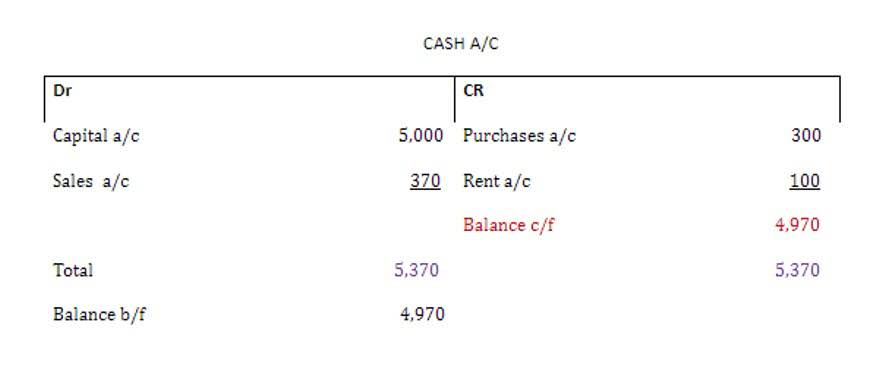
In construction projects, value engineering is utilized to offer a clear and thorough analysis of how to effectively fulfil the project’s goals. When combined with cost estimates, value engineering allows for an impartial assessment of the whole building project. Due to a financial problem, the vendor sells the store or property for a very cheap price. If determining a salvage value is too complex, or if the salvage value is projected to be low, it is not essential to include a salvage value in depreciation calculations.

Benefits of Calculating the Salvage Value
Remember, the goal isn’t to make a perfect prediction (that’s almost impossible) but to make a solid estimate that helps you plan. Whether leasing a car, buying manufacturing equipment, or managing a fleet of vehicles, understanding residual value puts you in a better position to make sound financial decisions. When a consumer leases a vehicle, the leasing company estimates the car’s residual value at the beginning of the lease. Suppose a what is salvage value car is leased with an original cost of $30,000, and the residual value is set at 50% after a three-year lease term, which is $15,000.
External Factors
- From different perspectives, experts offer insights on estimating salvage value.
- The company also estimates that they would be able to sell the computer at a salvage value of $200 at the end of 4 years.
- Understanding Customer Lifetime Value (CLV) is pivotal for businesses aiming to thrive in…
- Another example of how salvage value is used when considering depreciation is when a company goes up for sale.
- We can also define the salvage value as the amount that an asset is estimated to be worth at the end of its useful life.
The declining balance depreciation method can be a useful tool for determining the salvage value of fixed assets. Still, it’s essential to understand its limitations and weigh them against the potential benefits before deciding whether to use it. Ultimately, the choice of depreciation method will depend on your specific circumstances and financial goals. Thirdly, the salvage value of an asset can also impact the tax implications of asset disposal. The internal Revenue service (IRS) allows for the deduction of the depreciation of an asset over its useful life. The salvage value of an asset is subtracted from the Online Bookkeeping total cost of the asset to determine the depreciable basis.

What Is Salvage Value in Depreciation?

Conversely, during downturns, demand may payroll wane, reducing the potential resale price. Understanding the broader economic environment is essential when estimating salvage value. AI also enhances depreciation forecasting by dynamically adjusting schedules based on real-time data, reducing human error and ensuring compliance with accounting standards.
Can Residual Value Change Over Time?
- For instance, stricter environmental regulations could diminish the salvage value of older industrial equipment that fails to meet updated standards.
- For example, a company may assume that an asset will have a salvage value of 10% of its initial cost when it reaches the end of its useful life.
- The salvage or the scrap value is estimated when the useful life of an asset is over and can’t be used for its original purpose.
- This content is for general information purposes only, and should not be used as a substitute for consultation with professional advisors.
- As dust clogs the different parts of your asset (such as machinery), it results in reduced airflow.
- A higher salvage value results in lower annual depreciation expenses, potentially inflating net income.
- The idea is that the asset will be nearly worthless at the end of its useful life.
In other words, it’s the price a company can sell it for, either as a working asset or as scrap. Businesses use salvage value in accounting to determine how much depreciation to record over the years. Salvage value is the estimated resale value of an asset at the end of its useful life.
Careers
Companies may use software tools like Sage Fixed Assets or Asset Panda to aid in calculating salvage value. These programs help track asset depreciation and estimate salvage values based on historical data and market trends, reducing the likelihood of human error. Explore how salvage value influences financial planning, affecting depreciation, financial statements, and investment decisions. Perhaps the most common calculation of an asset’s salvage value is to assume there will be no salvage value. As a result, the entire cost of the asset used in the business will be charged to depreciation expense during the years of the asset’s expected useful life.
This is the most the company can claim as depreciation for tax and sale purposes. Next, the annual depreciation can be calculated by subtracting the residual value from the PP&E purchase price and dividing that amount by the useful life assumption. Starting from the original cost of purchase, we must deduct the product of the annual depreciation expense and the number of years.
- Estimate the salvage value of the asset at the end of its useful life, as in the NPV method.
- To calculate the annual depreciation expense using this method, the salvage value is subtracted from the cost of the asset to determine the total depreciable amount.
- The Internal Revenue Service (IRS) requires companies to estimate a “reasonable” salvage value.
- It is easy to calculate and understand, and provides a straightforward way to determine the annual depreciation expense.
- Different countries and industries follow varying tax rules regarding salvage value.
Maintaining and repairing such an obsolete system can be difficult, expensive, and time-consuming. As the existing assets are superseded by more advanced & superior ones, they undergo a significant decrease in the value. Salvage value and the age of the asset are typically proportional in nature. However, there are always exceptions, and the drop in the value need not be strictly proportional to the asset’s age. Platform ecosystems are the bedrock upon which many of today’s most successful businesses are… Brand equity and scalability are two pivotal concepts in the realm of business strategy, each…
